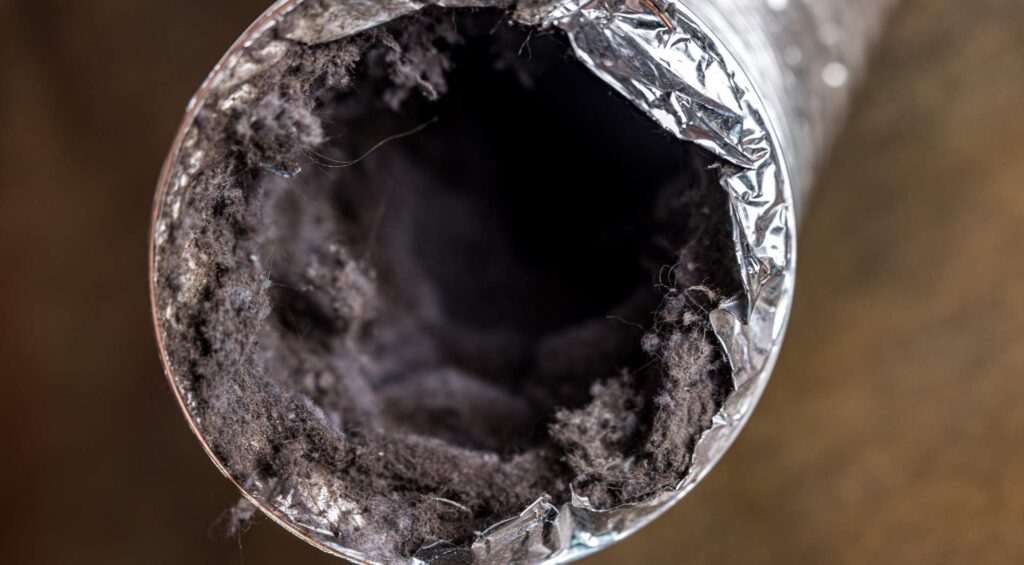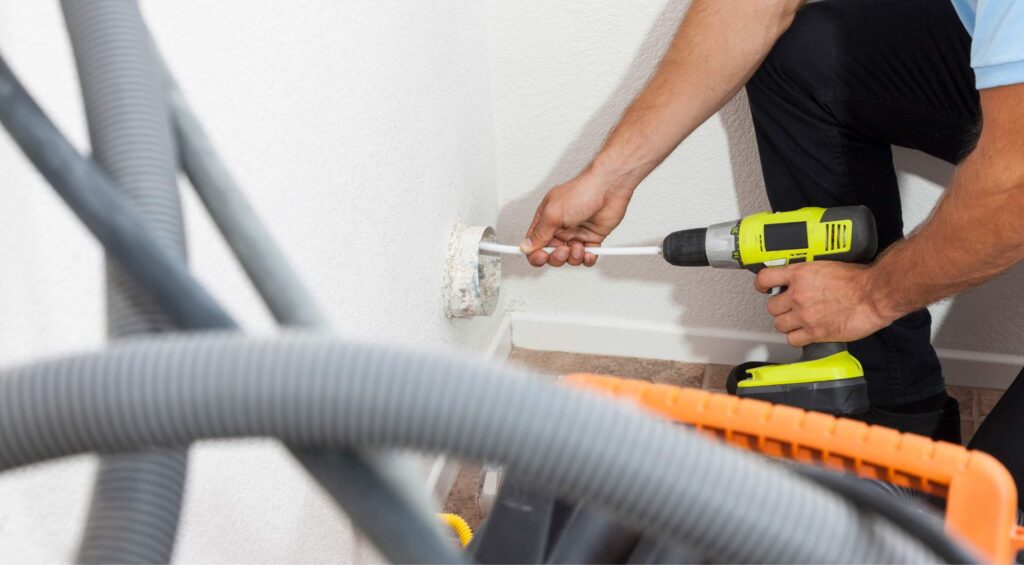9 Reasons for Weak Air Flow From Vents in Your House & How To Overcome Air Flow Issues for a More Comfortable Home
Published August 16, 2024 by Tony Spezza
Are you perplexed about why the vents in your home aren’t blowing out as much air as they used to? Fixing the problem can seem even more daunting than discovering its cause, especially if you are unfamiliar with the inner workings of your HVAC system. Meanwhile, having to figure things out in an uncomfortable atmosphere can add to your frustration.
Let’s bring this dilemma down to earth with some practical information. Once you are demystified, you’ll be able to take the appropriate steps to restore your HVAC system to efficient operation.
AAA Heating and Cooling explains here the possible causes of weak air flow, how to prevent it, and how to resolve the problem once it’s started.
Table of Contents
- Why Is There Barely Any Air Coming Out of My Vents?
- 9 Reasons Why You May Have Weak Air Flow From Some Vents in Your House
- The Importance of Keeping Your HVAC Vents Flowing Freely
- How Do I Get More Air Flow From My Vents?
- AAA Heating and Cooling: Keeping Portland’s HVAC Systems Clean & Free-Flowing for Over 60 Years
Why Is There Barely Any Air Coming Out of My Vents?
There are several reasons your vents are not putting out the amount of air they should. These include:
- Dirty or clogged air filters
- Blockage in the vents
- Faulty thermostat
- Blower malfunction
- Leaky ductwork
- Low refrigerant levels
- Oversized or undersized ductwork
- Too few vents
- Dirty or blocked condenser unit
For an expert evaluation of your HVAC system to determine the precise cause of weak air flow from some of your vents, contact AAA Heating and Cooling today.
9 Reasons Why You May Have Weak Air Flow From Some Vents in Your House
#1: Dirty or Clogged Air Filters
A clogged air filter, or even just a dirty filter, restricts the passage of air through the system. Thus, the system has to work harder to distribute air throughout your home.
One possible consequence of a clog is a temperature decrease in the evaporator coil. This can lead to condensation and eventually ice formation. Ice will reduce the system’s ability to remove heat from the air. It could cause the system to break down entirely.
#2: Blocked Vents
Your HVAC system might be running inefficiently because of obstructions near the vents. Depending on whether your vents are along the baseboards, on the floor, or on the ceiling, you may have to move furniture or bedding to ensure they are not blocked.
A closed vent is also considered to be obstructed, so opening the vent might restore normal air flow. If not, the fan’s motor may be malfunctioning.
#3: Faulty Thermostat
Problems with your thermostat — such as loose, disconnected, faulty, or old wiring — can decrease your HVAC system’s ability to deliver sufficient air flow to your home.
Some signs that may indicate a malfunctioning thermostat include:
- The air conditioning or furnace won’t turn on when you set the thermostat lower or higher than the current temperature.
- The HVAC system is running constantly or goes through short cycles, yet the temperature isn’t improving.
- The thermostat screen is dark or blank, or nothing changes on the thermostat screen when you press buttons.
Most modern thermostats should be replaced every 10 years. Contact AAA Heating and Cooling to see whether your thermostat can be repaired or if replacement is necessary.
#4: Blower Malfunction
A malfunctioning blower is one possible cause of weak air flow. The blower’s function is to push hot or cold air out of the unit and into your home. Some signs that your blower is malfunctioning, besides weak air flow, are:
- Higher energy bills
- Overheating of the HVAC unit
- Odd odors or noises, such as grinding or screeching, coming from the HVAC unit
Many factors can limit the blower’s ability to function properly, such as:
- Debris or moisture buildup
- Clogged air filter
- Worn out bearings
- Faulty control board
- Incorrect thermostat settings or loose wiring
- Burned out motor
Annual maintenance can keep many of these problems from occurring.
#5: Leaky Ductwork
Any openings in your ductwork allow air to escape, weakening air flow through the vents. Depending on where the leakage is occurring, your HVAC system may be pushing cool air into spaces that don’t need it, such as the attic or basement, such that the energy is wasted. Or, it could cause an excessive buildup of positive pressure, such that cooled air is pushed outside.
To determine the location of any gaps, cracks, or tears in your ductwork, conduct the following procedure:
- Pressurize your system by sealing off all registers with plastic wrap or duct tape. Then run the system at full blast.
- Examine the ductwork for obvious openings, especially around joints. You will hear and feel air coming out of these areas.
- Less obvious openings can be detected if you hold up a stick of incense or a smoke pencil to the ductwork. The smoke is pulled into the openings.
- Mark all openings with a grease pencil. Any duct tape should be removed, and the openings should be sealed properly by a professional, such as AAA Heating and Cooling.
#6: Low Refrigerant Levels
Low refrigerant levels may be caused by a leak and can keep your air conditioning from cooling the air sufficiently. Signs of low refrigerant include weak air flow, warmer-than-normal air blowing out of the vents, ice buildup on the evaporator coils or refrigerant lines, or short cycling of the system.
If you notice these signs, turn off your HVAC unit to prevent further damage to the compressor. Consult a professional to locate and seal leaks. Many factors play into properly recharging your system with refrigerant. Overcharging can cause serious damage.
#7: Oversized or Undersized Ductwork
Ducts that are too large or too small will not be able to deliver air effectively into your home from the HVAC system. Oversized ducts can handle larger air flow, but your HVAC unit might not be capable of pushing enough air to maintain the necessary air pressure for proper air distribution. As a result, your system will not be energy efficient and can wear out more quickly.
Undersized ducts cause air pressure to build up in the ducts and put stress on the HVAC unit by increasing resistance against the blower fan. Essentially, an HVAC system with ducts that are too small will be inefficient and have a shorter lifespan.
Professionals use the Manual D sizing method to ensure proper duct dimensions in residential homes.
#8: Too Few Vents
A standard HVAC unit generally requires one supply vent and one return vent for every 100-150 square feet of space in the room supplied by the vent. Having multiple vents allows better air movement and reduces stress on the HVAC unit. Having too few vents puts extra stress on the unit and leads to poorer operation.
#9: Dirty or Blocked Condenser Unit
Condenser coils are typically located outside in the large, metal “box” that is considered the air conditioning unit. Dirt, debris, and other deposits build up on these coils and hinder their ability to absorb heat. Thus the unit has to work harder and wears out more quickly.
Coils should be inspected and cleaned once or twice a year to ensure that your HVAC system works at its full potential.
The Importance of Keeping Your HVAC Vents Flowing Freely
Every mechanical component is critical to the proper functioning of an HVAC system, and some of these components are easily damaged. Regular professional cleaning and maintenance can keep the system running efficiently and save homeowners money by reducing energy consumption. In addition, the system may last longer and be less likely to cause a fire.
The U.S Environmental Protection Agency (EPA) suggests having your air ducts professionally cleaned if:
- They are infested with rodents or insects.
- They are clogged with dust or debris.
- Vents in your home are putting out visible particles from inside the ducts.
- A significant amount of mold is growing in your ducts or on other parts of your HVAC system.
How Do I Get More Air Flow From My Vents?
To optimize the air flow through your vents, refer to the following list:
- Schedule a professional duct cleaning to remove dust and dirt buildup and allow better air quality and freer air flow through the ducts.
- Add ductwork extensions to eliminate areas where air flow is reduced. Add registers in rooms to direct air flow to specific areas, if desired.
- Replace furnace filters clogged with dust and dirt.
- Add more insulation to your walls, especially batt insulation between wall studs, to reduce noise and drafts.
- Seal up leaks in a drafty house with caulk or weatherstripping around windows and doors.
- Install a programmable thermostat that allows you to set the temperature for every day. This allows you to heat or cool your home only when it is necessary, putting less stress on your HVAC system so that it works better and lasts longer.
- If your home has an exhaust vent, make sure it is not blocked. Clean it periodically, so that hot air does not build up in the house and inhibit air flow.
- Vacuum dust from the vents every few months.
These measures are mainly preventative. If a problem arises that is beyond your skill or comfort level to address, do not hesitate to contact AAA Heating and Cooling.
AAA Heating and Cooling: Keeping Portland’s HVAC Systems Clean & Free-Flowing for Over 60 Years
AAA Heating and Cooling has been serving the Portland area since 1961. As a leading Portland HVAC company, we make your health, comfort, and safety our priority as we strive to meet your home or business heating and cooling needs.
Our services include:
- Home heating and air conditioning services, including repairs and installation
- Commercial furnace and air conditioning services
- Duct cleaning (we recommend this every 3-5 years and can take a full day to carry out)
- Water heater services, including repairs and installation
- Air quality services, including air filtration, humidity control, and air ventilation
- Control systems (thermostats)
Our Planned Service Program gives you a discounted rate for routine HVAC maintenance. Save money and strengthen and lengthen the life of your HVAC system by opting for this program that currently helps over 1,500 customers.
After you contact us, we promise to get in touch with you in less than 24 hours to discuss your HVAC service needs. A technician will give your system an expert inspection and a thorough estimate of proposed charges. All our work is done safely and competently, per EPA and manufacturer recommendations. Call us today or fill out our contact form to begin the process of making your home a safer, more comfortable living space.



